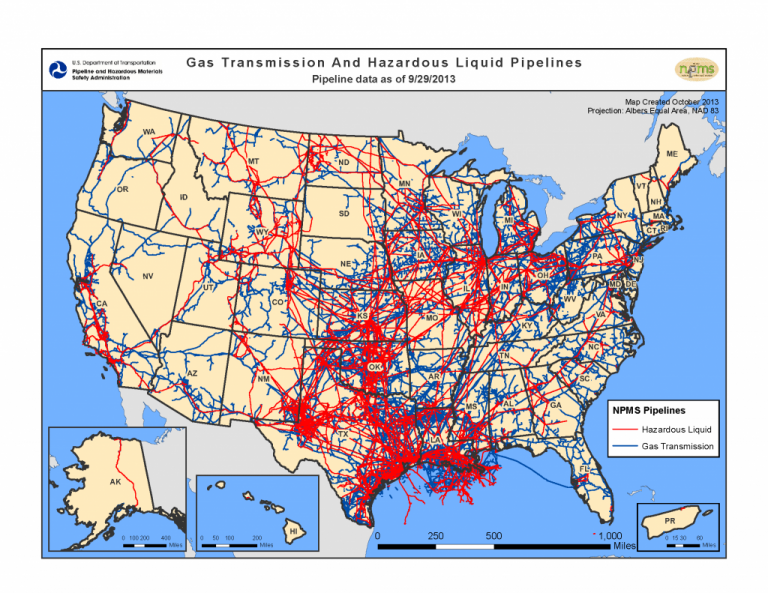Where are pipelines in the U.S.?
Pipelines are a safe and efficient way to transport energy products from production sites to markets where they are sold. In fact, the Department of Transportation has repeatedly said that pipelines are the safest mode of transportation for energy products and that accidents are uncommon.
The Pipelines and Hazardous Materials Safety Administration publishes a map like the one shown here.

Are pipelines common?
Yes. There are hundreds of thousands miles of pipelines in the US and in all 50 states. According to the Pipeline Safety and Hazardous Materials Commission, America’s pipeline infrastructure includes:
- 182,000 miles of Hazardous Liquid and Carbon Dioxide pipelines;
- 325,000 miles of onshore and offshore Gas Transmission and Gathering Systems pipelines;
- 2,145,000 miles of Gas Distribution mains and services pipelines;
- 129 LNG Facilities connected to our gas transmission and distribution systems; and • Propane Distribution System pipelines.
If pipelines are so common, how come I never see them?
Most transmission pipelines are located underground, beneath rivers or roads, under farmland and parks, and near homes and other buildings in your community.
Are pipelines being built right now?
Due to the recent developments in drilling techniques, natural gas is becoming an extremely common energy product which requires new and upgrade pipelines. Estimates show that 24,000 miles of new pipeline will be needed by 2035 for natural gas alone.
Are pipelines environmentally friendly?
Oil and gas pipelines are currently the most environmentally friendly way to move energy product. Unlike trucks and trains, pipelines themselves do not give off emissions and have a much lower rate of accident than other modes of energy transportation.
Are pipelines regulated?
Yes. America’s pipelines are primarily regulated by three agencies, and even more depending on where you live. These primary agencies include the:
- Federal Energy Regulatory Commission;
- Environmental Protection Agency; and
- Pipeline and Hazardous Materials Administration.
State agencies may also have authority over pipeline regulations depending on where you live.
Do safety incidents ever occur?
Are pipelines secure from physical and cyber threats?
Pipeline operators are hard at working ensuring that our nation’s pipelines are safe and continue to deliver energy every day. Companies constantly monitor pipes physical locations and are systematically making sure that our pipelines are not being hacked.

